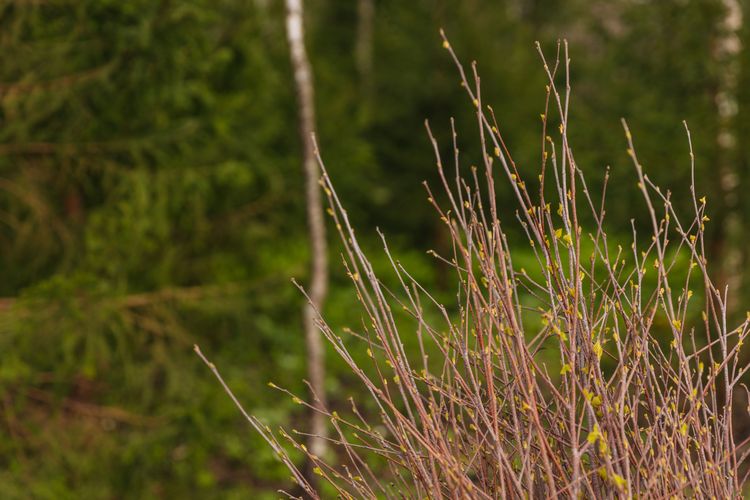Nature-based solutions: a key climate response
Key takeaways
- Nature-based solutions currently deliver 99.99% of global CO2 removals and could contribute up to 5 gigatonnes annually by 2030
- Nature-based solutions and direct air capture are both necessary parts of the climate response, but they have very different roles to play
- When designed well, nature-based solutions also support biodiversity and strengthen ecosystem resilience
These days, there’s quite a bit of talk about nature-based solutions to climate change (sometimes also referred to as natural climate solutions). They got top billing in the most recent IPCC report on climate change, and could deliver as much as 5 gigatonnes (that’s 5 billion tonnes!) of CO2 removal & reduction by 2030.
Nature-based solutions are actions that help to restore natural ecosystems and address, but also adapt us to, climate change. These solutions are developed in collaboration with natural systems as opposed to technological ones.
Keep reading to find out more about the difference and impact of these two solutions.
Before diving into nature-based solutions - how much CO2 do we need to remove?
For context, the rough annual estimate for carbon emissions is around 50 gigatonnes. How much of this are we currently removing? Around 2 gigatonnes. Here’s a visualisation of the challenge:
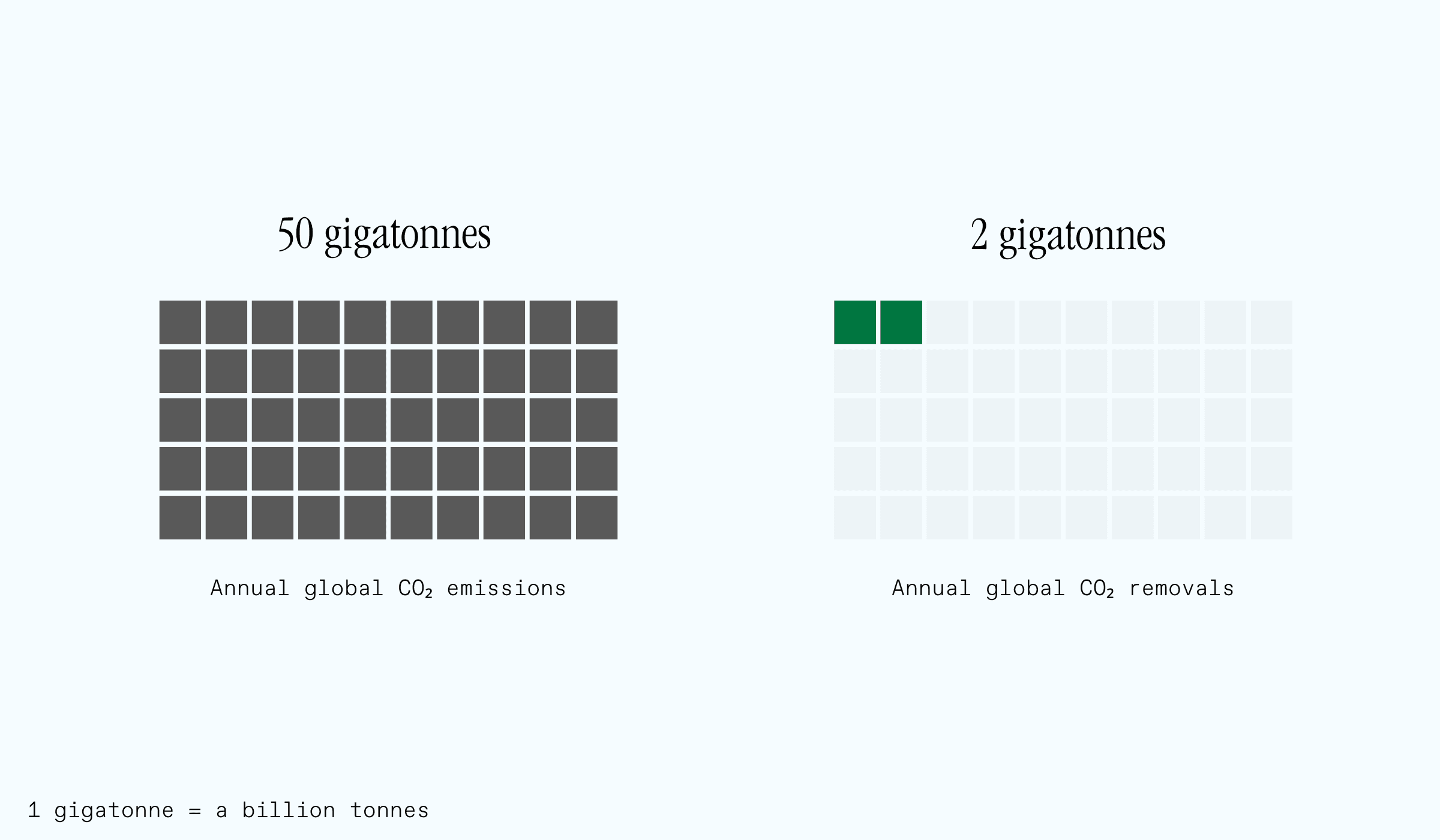
Do nature-based solutions account for any of this removal?
Yes - in fact, a recent study by scientists at the University of Oxford found that 99.99% of current CO2 removals come from nature and land management (you can access this report directly on stateofcdr.com).
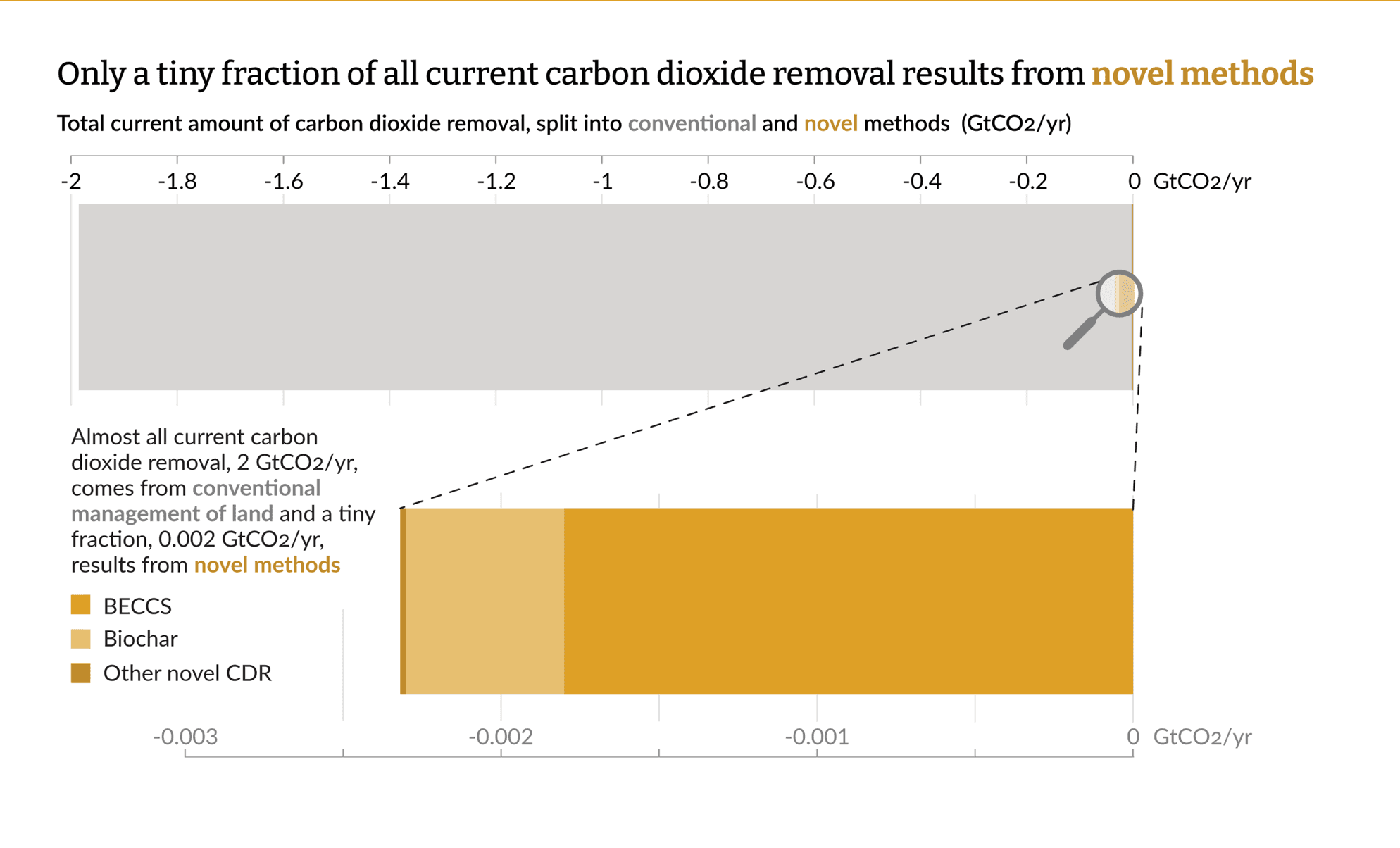
Source: stateofcdr.com
This category includes, among others:
- afforestation
- reforestation
- soil carbon
- peatlands
- agroforestry
- durable harvested wood products (e.g. buildings, furniture)
Many of these use the same natural principle: trees or other plants capture CO2 and convert it to carbon (which they store in branches and roots), releasing the oxygen back into the atmosphere. Another way to think about it: trees are a type of direct air capture technology, fine-tuned by 370 million years of evolution.
So nature is doing most of the carbon removal today… but the future is all about direct air capture, right?
Nature-based solutions vs direct air capture
Is the future all about direct air capture? It’s definitely a beautiful hope. But it’s not very likely. Let’s talk it through.
Direct air capture (known as DAC for short) is a type of technology that removes CO2 from the atmosphere. When combined with long-term CO2 storage (e.g. injecting CO2 underground where it will mineralise), it is undoubtedly the best tool we have for solving the climate challenge. If we could just scale DAC to 50 gigatonnes tomorrow, we would not be facing planetary-scale challenges.
What’s stopping us from scaling DAC?
Firstly, DAC is currently done on a very tiny scale. In 2025, the total operating capacity of DAC plants around the world is around 10,000 tonnes of removal. That’s roughly 0.00002% of the total annual removals we discussed above. Even reaching 1 gigatonne would require a ~100 000x increase - just to match half of what nature-based solutions are already removing annually.
Of course, every technology is small when it starts off, and we would expect DAC to scale very fast. In the technology world, annual growth rates in excess of 100% are not unheard of, and even 1000% has happened before.
However, DAC is not a purely software problem - it requires building real-life factories. Scaling construction 100 000x is a lot harder than scaling a software solution. This differs from nature-based solutions, which - while they also require upfront investment - build on ecosystems that are already functioning today.
The second challenge with scaling DAC is that it requires large amounts of energy. Why? Because CO2 in the atmosphere is still highly diluted.
At the time of writing, the most up-to-date CO2 concentration from CO2.earth was 430.19 ppm. That is equivalent to 0.04% of the atmosphere. To visualise what it’s like to try to distil that, imagine you had 2500 needles, and needed to find just 1 in the pile.
This means that unlike nature-based solutions, DAC is quite energy-heavy - extracting CO2 requires compressing air, which in turn requires a lot of energy. This means it is best suited for countries with abundant, excess fossil-fuel-free energy.
In the next two decades, the world is more likely to face an energy shortage of 3-5% by 2030, rather than an energy excess. And the while the energy mix has to yet been decarbonised (i.e. there are still fossil fuel sources contributing energy to the grid), using “green” energy for DAC rather than to replace existing fossil fuels probably doesn’t make sense in net CO2 terms, especially when nature-based solutions can deliver impact without the same energy burden.
Those two reasons mean that while DAC is important and necessary, it cannot alone significantly increase the current 2 gigatonnes of CO2 removal annually.
Which brings us back to nature-based solutions.
How much carbon removal could nature-based solutions account for?
There are a range of studies exploring the annual CO2 potential of nature-based solutions. Thankfully, the UN’s Environment Programme looked at a range of studies and combined them in one graph (reproduced below) so that we can look at the ranges.
For 2030, the expected range is 4.5Gt - 5.75Gt; by 2050, the range 10-12Gt. In all cases, these are annual removals and avoidance - so could be compared to the 50Gt of CO2 we are collectively emitting each year.
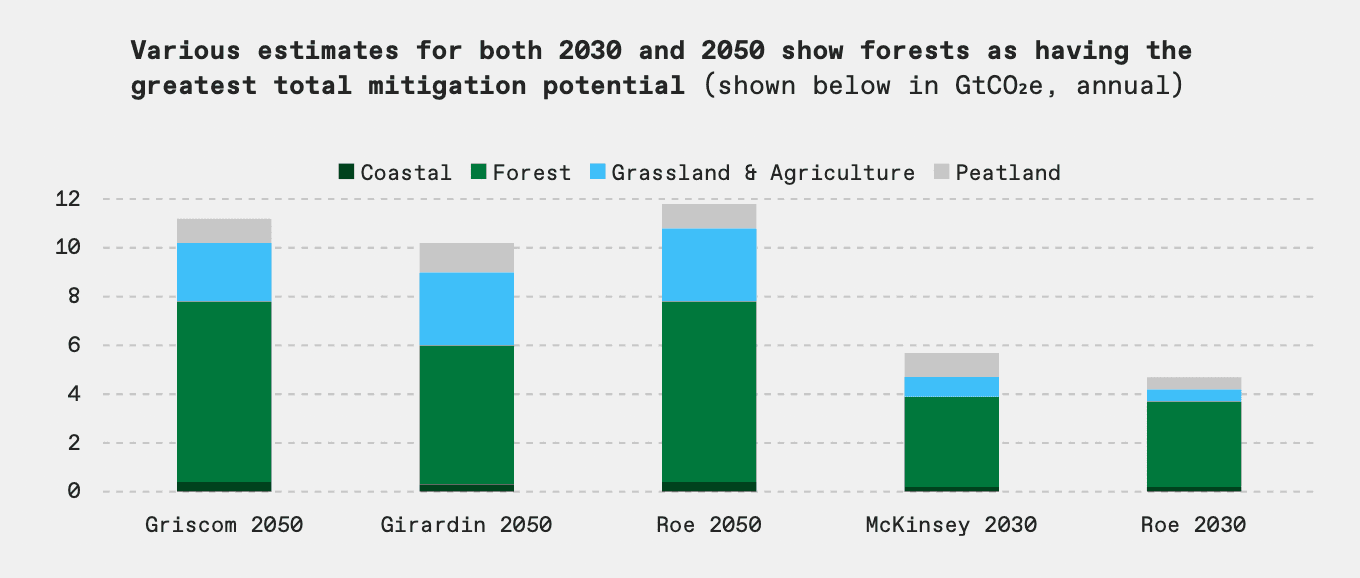
Sources: Griscom Et Al. 2017; Girardin Et Al. 2021; McKinsey & Company 2021; Roe Et Al. 2019. The McKinsey forest' figure includes avoided peatland impacts, but not peatland restoration.
What would it take to unlock more carbon removal through nature-based solutions?
Unlocking increased carbon removal through nature can be done via different paths. Some examples:
- Afforestation - turning unused or underused land into forests can significantly increase the amount of carbon that land can store
- Improved forest management (Impact Forestry)- implementing technology-driven forest management practices can enhance carbon sequestration in existing forests. This might include changing harvest type or -frequency, or planting new saplings in between a more mature forest
- Soil carbon in agriculture - practices like agroforestry and cover cropping can increase carbon sequestration in agricultural soils
- Peatland and wetland restoration - drained peatlands / wetlands are likely emitting a large amount of CO2 from soil. Rewetting and restoring these ecosystems can help stop those emissions and help these lands start sequestering more carbon
By combining technology, policy support, public engagement, and scientific advancements, we can unlock the full potential of nature-based solutions to remove carbon from the atmosphere and combat the climate crisis effectively.
Biodiversity: the often-overlooked co-benefit of nature-based solutions
One of the strongest arguments for scaling nature-based solutions is that they offer far more than just carbon removal. When done right, they support biodiversity by restoring native habitats, reconnecting fragmented ecosystems, and creating space for wildlife to thrive. For example:
- Afforestation using native species can bring back pollinators, birds, and mammals to areas that have been degraded
- Wetland and peatland restoration help revive complex ecosystems that support everything from amphibians to migratory birds
- Even soil-focused approaches like agroforestry can improve habitat diversity and boost ecosystem resilience
Unlike engineered carbon removal methods, nature-based solutions strengthen the living systems we all depend on - think air, soil, and water.
What are some downsides of nature-based solutions?
As with any climate tools, nature-based solutions come with challenges. Some of the key ones often mentioned are:
- Time required to reach full potential - trees and plants grow slowly. Peat accrues even more slowly. As a result, if we want to see significant carbon storage in nature-based solutions we have to start scaling up these activities now
- Vulnerable to climate change impact - climate change brings increasing temperatures, which in turn can cause forest fires & a wider spread of pests like bark beetle
- Land use competition with other uses - there is a limited amount of land available, and using it for NbS might mean land not available for other uses required (such as housing, or growing food)
These are all valid questions! But they can be mitigated in the following ways:
Planting early and often
The time to scale nature-based solutions is now. In order for these to start storing significant amounts of CO2 between 2030 and 2050, we need to be actively planting/changing management practices/rewetting peatlands etc today.
Considering the climate in planting and management plans
It’s true that the trees that thrived over the last 100 years may not be the same ones that thrive in the next 100, and that a drier climate may require different management. Luckily, we have both the scientific knowledge required (in the form of research into drought-resistant plants etc) and the new management and monitoring technologies to reduce risks.
These tools are essential for ensuring that nature-based solutions remain effective and resilient in a changing climate. For example, remote sensing can identify pest loss much earlier, allowing its spread to be curtailed.
Data-based, rigorous analysis of land suitability
We know that not all land is suitable for use in nature-based climate mitigation. With modern data based tools, we can make sure we’re not damaging valuable food growing areas or biodiversity-rich natural ecosystems.
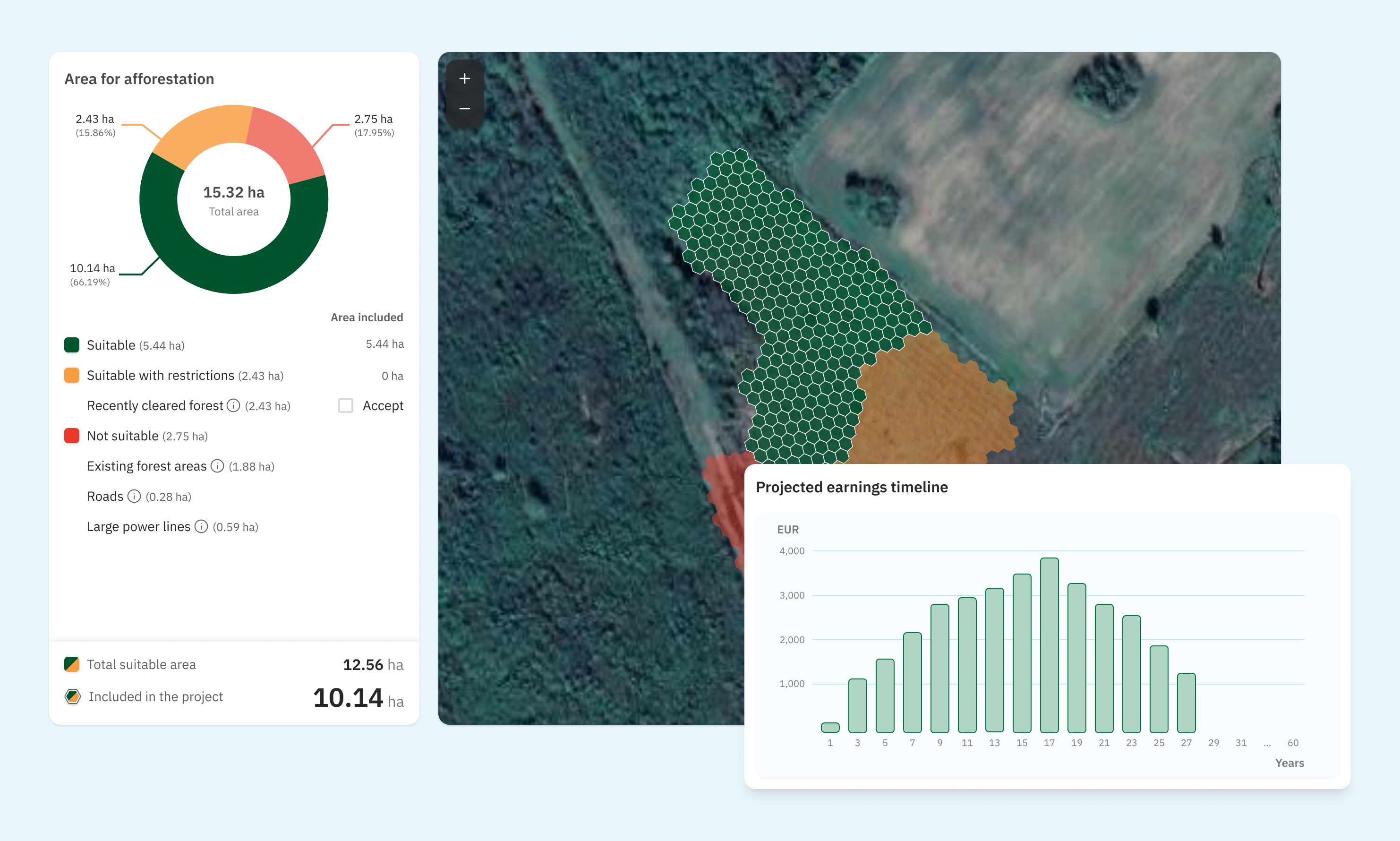 Example from Arbonics’ land analysis tool, which takes into account over 50 factors when considering the suitability of land for afforestation
Example from Arbonics’ land analysis tool, which takes into account over 50 factors when considering the suitability of land for afforestation
Explore nature-based solutions with Arbonics
At Arbonics, we're helping restore forests and biodiversity across Europe while connecting climate-conscious companies with trustworthy, nature-based carbon credits.
Want to know how we can support your climate goals? Get in touch with our team here.
- Key takeaways
- Before diving into nature-based solutions - how much CO2 do we need to remove?
- Do nature-based solutions account for any of this removal?
- Nature-based solutions vs direct air capture
- What’s stopping us from scaling DAC?
- How much carbon removal could nature-based solutions account for?
- What would it take to unlock more carbon removal through nature-based solutions?
- Biodiversity: the often-overlooked co-benefit of nature-based solutions
- What are some downsides of nature-based solutions?
- Planting early and often
- Considering the climate in planting and management plans
- Data-based, rigorous analysis of land suitability
- Explore nature-based solutions with Arbonics


